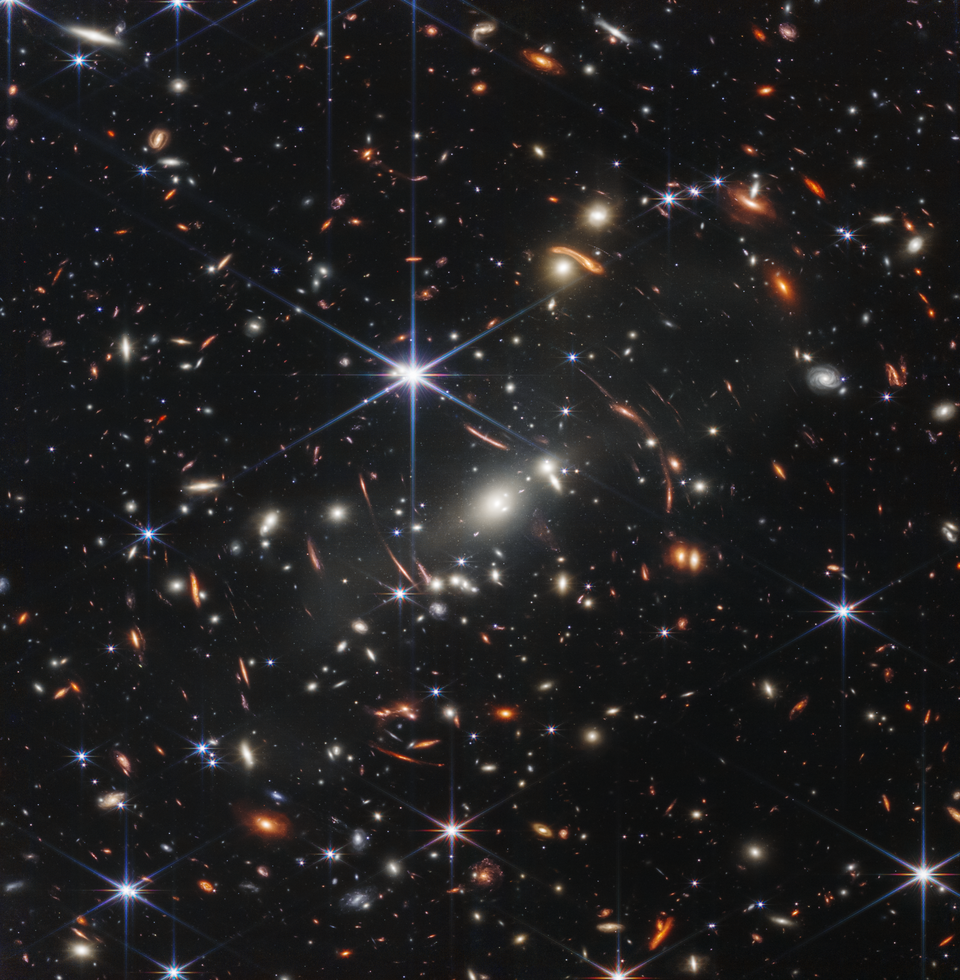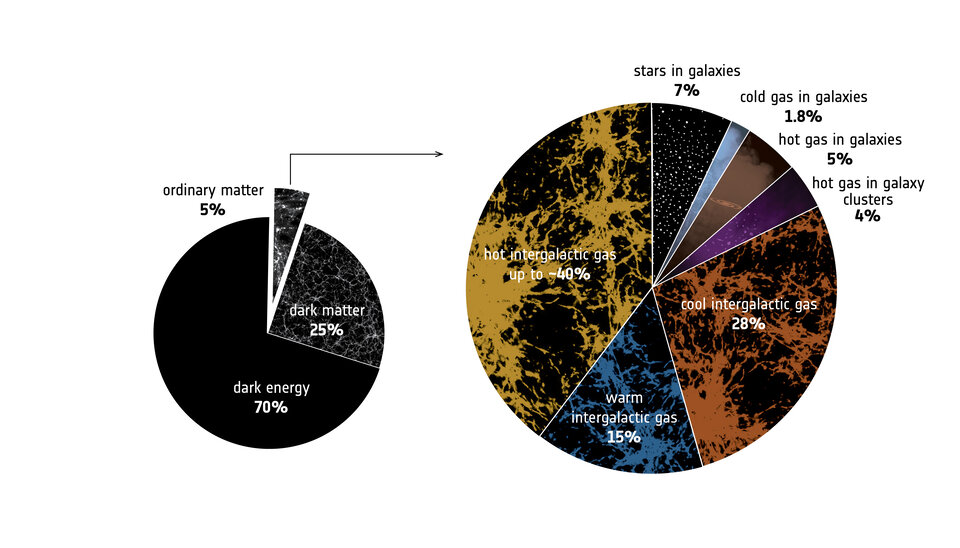Winners unravel Euclid #CosmicMystery with creative inspiration
Over 90 participants were up for the challenge to visualise just how much we know and don’t know in the Universe and explain the #CosmicMystery that ESA’s Euclid mission will soon begin to investigate. From songs, crochets and animations to apparel, paintings and baked goods, the creativity of participants amazed the judges.

Humans, planets, stars and galaxies appear to make up just 5% of the entire Universe. The remaining 95% hides in plain sight. About 25% is made of invisible dark matter whose presence affects the motion and apparent shape of galaxies. About 70% is made of exotic dark energy, which drives the acceleration of the expansion of the Universe.
Deep field views like the ones from the Hubble and James Webb space telescopes have revealed the billions of galaxies that scatter the night sky in any direction we look. It’s hard to grasp just how many there are.
It’s even harder to imagine how little we know of the Universe, and how much still remains a cosmic mystery for ESA’s Euclid mission to try and untangle.
Over 90 participants used their ingenuity to convey the mind-bending 5-25-70 ratio of the components of the Universe, the limits of what we currently know and the intricate case that stands before Euclid, the Dark Universe detective.
“We were completely taken aback by the creativity of the entries and their diversity,” said Giuseppe Racca, ESA Euclid project manager.
“As scientists, we work with these numbers on a very factual level, so it was fascinating for us to see so many people engaged in finding accessible and fun ways to represent and explain these cosmic proportions,” added Rene Johannes Laureijs, ESA Euclid Project Scientist.

The entry that captivated the judges the most was this video by Mette Bybjerg Brock from Denmark, who wins the competition. Mette chose to represent our knowledge of the Universe and lack of it by drawing a parallel with the human life and our journey of learning across the ages.

“As a scientist who felt a fascination for cosmology since I was young, the video felt very emotional. On the one hand, it conveyed, in a very authentic way, the broader scope of scientific research — understand our place in the Universe and evolve as humankind. On the other hand, many of the Euclid scientists will have dedicated their entire life to the mission so it was a striking reminder of their own personal journey,” said Guadalupe Canas Herrera, ESA Research Fellow working for Euclid.
Mette will join the launch event at the European Space Operations Centre (ESOC) in Darmstadt, Germany, witnessing the launch broadcast, acquisition of signal and takeover of spacecraft control by ESA mission operators.
Nine runners-up were selected by the panel to receive an ESA goodie bag for their work.
- Kevin Wolz (Italy) for a song that will make you jump off your seat and move, and lyrics full of details for the connoisseurs (runner-up with special mention of the jury)
- Cynthia Weippert (Germany) for the skilfully painted canvas that included even the ESA logo (runner-up)
- Silvia Molinini (Italy) for the lovely crochet with a very inspired Planck detail and Euclid spacecraft miniature model (runner-up)
- Valeriya Korol (Germany) for the geeky cosmic chocolate verrines (runner-up)
- Tamara Smit (Greece) for a stunning dress showcasing the accelerated expansion of the Universe (runner-up)
- David Toth (Netherlands) for a delicious-looking fruit pie (runner-up)
- Soraya Sanchez Santamaria (Spain) for an illustration that will captivate your attention (runner-up)
- Guillaume Truong (France) for an art nouveau poster worth taking the time to explore in detail (runner-up)
- Katarzyna Krawiec (Poland) for the original Euclid vest for action lovers (runner-up)

All runners-up and many more of the entries that did not make it to the final list were inspiring, but one runner-up entry in particular stood out for the judges, who decided to give it a very special mention – the Cosmic Mystery song , submitted by Kevin Wolz and available also on Soundcloud. It is not only a catchy song that you will listen to on repeat – like some of the ESA team members have been doing – but it is also filled with exquisite details and references such as a roll call recording from one of the ESA launches. It’s a song to study its lyrics and dance to its beat.
Thank you to all the participants for helping us get a novel view of the cosmic mystery that ESA’s Euclid mission will soon begin to explore. Follow esa.int/euclid, @ESA_Euclid and #ESAEuclid on Twitter for more updates as we get closer to launch day. Entries to the competition have been judged by the ESA Euclid Social Media working group, including Euclid mission experts, editors specialising in Euclid science and operations, and social media managers from ESA’s Communication Department. ESA's Euclid mission is designed to explore the composition and evolution of the dark Universe. The space telescope will create a great map of the large-scale structure of the Universe across space and time by observing billions of galaxies out to 10 billion light-years, covering more than a third of the sky. Euclid will explore how the Universe has expanded and how structure has formed over cosmic history, revealing more about the role of gravity and the nature of dark energy and dark matter.


Access the video
Euclid is a European mission, built and operated by ESA, with contributions from NASA. The Euclid Consortium – consisting of more than 2000 scientists from 300 institutes in 14 European countries, the US, Canada and Japan – is responsible for providing the scientific instruments and scientific data analysis. ESA selected Thales Alenia Space as prime contractor for the construction of the satellite and its Service Module, with Airbus Defence and Space chosen to develop the Payload Module, including the telescope. NASA provided the near-infrared detectors of the NISP instrument.



